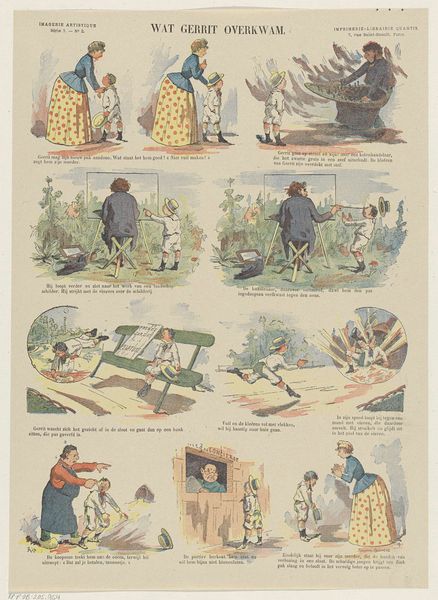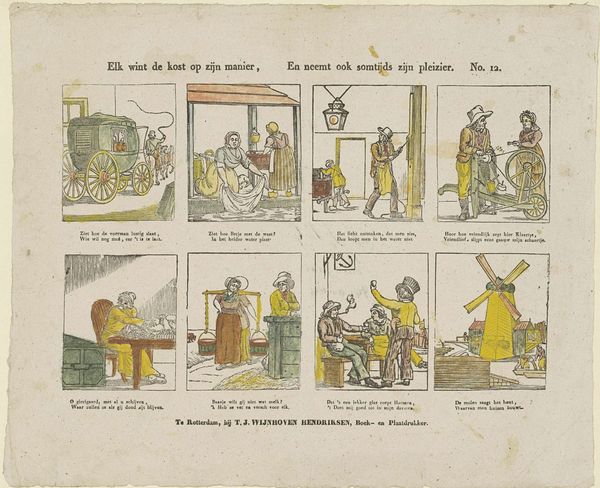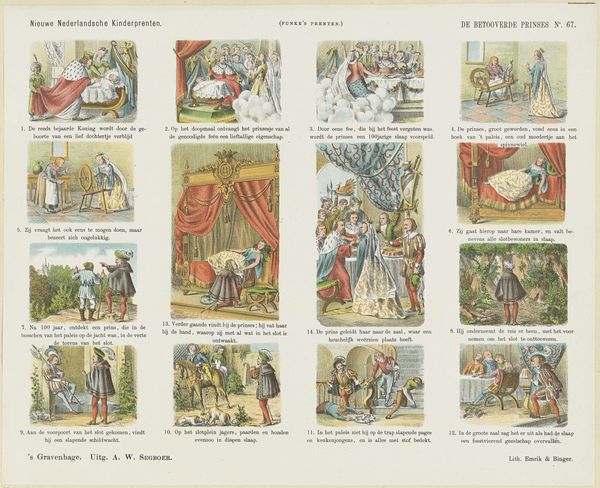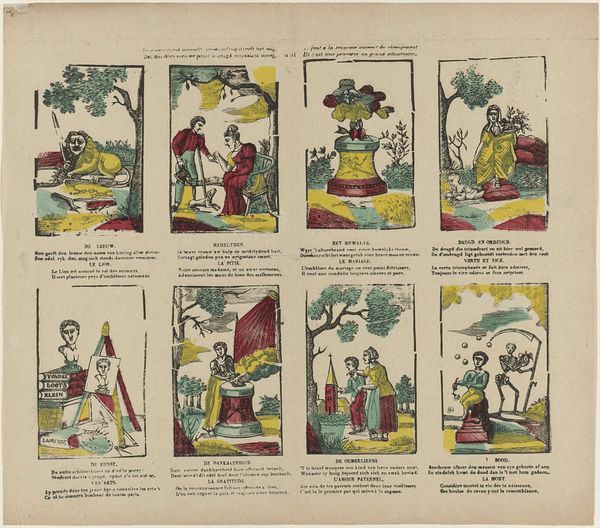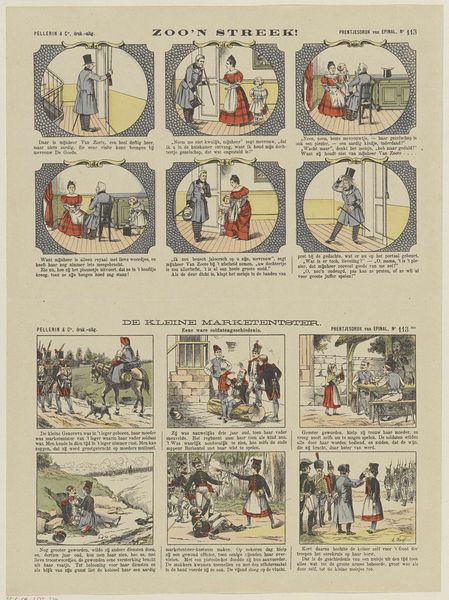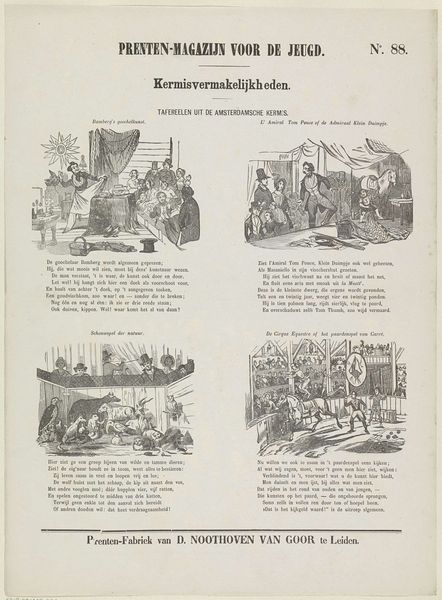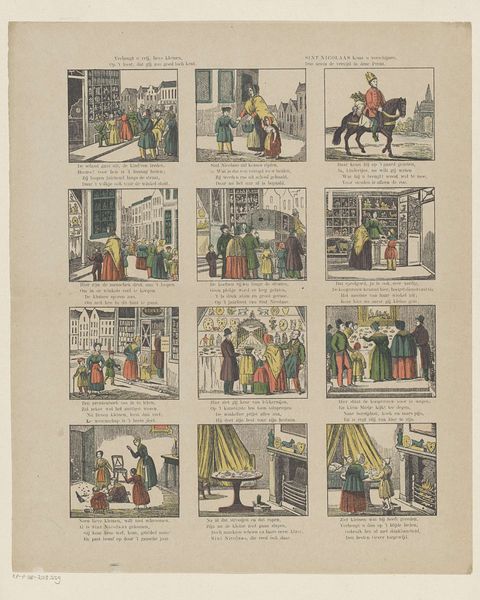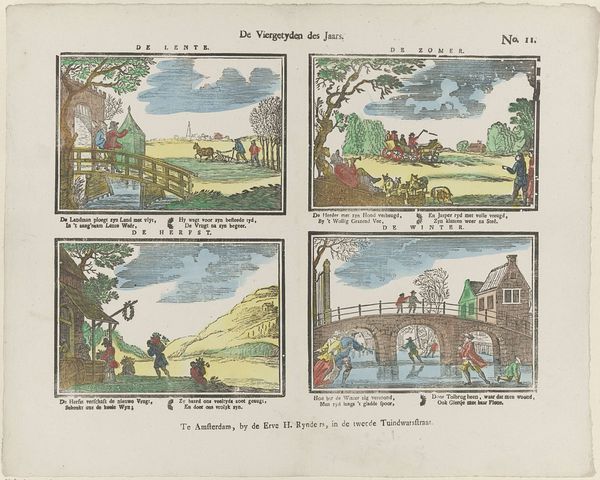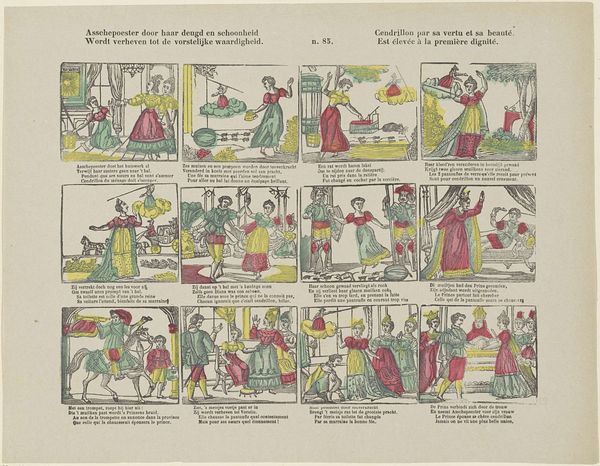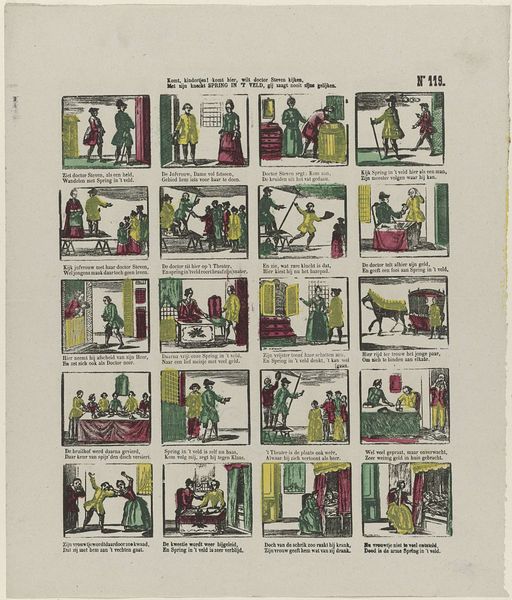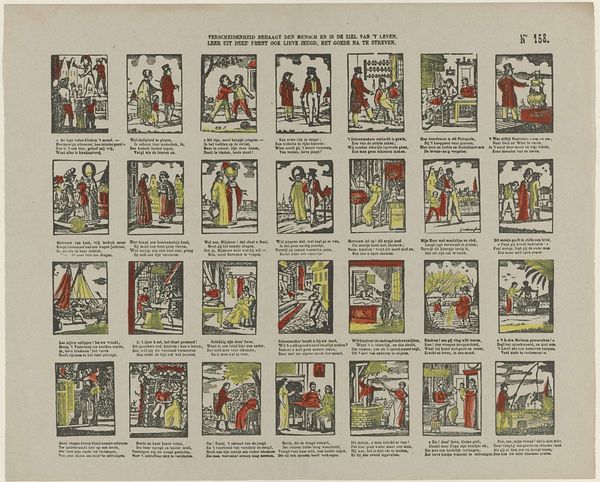
print, etching
#
art-nouveau
#
narrative-art
#
comic strip
# print
#
etching
#
illustrative and welcoming imagery
#
folk-art
#
comic
#
cartoon theme
Dimensions: height 340 mm, width 480 mm
Copyright: Rijks Museum: Open Domain
Curator: Immediately, what strikes me about this 1882-1947 print entitled "Reynaert de vos / Le roman du Renard" by Edward Pellens, is the organized chaos of these panels. The arrangement hints at the familiar grid structure we often see in comics, but the density is unusually rich, don’t you think? Editor: Rich is one word; congested comes to mind. These panels, created with etching, appear crammed, lacking a clear hierarchy, yet it also radiates a rustic charm. Almost like a page torn from an ancient illustrated bestiary. Curator: It certainly evokes an older era of production. Pellens created this print for the printing firm De Beukelaar, in Antwerp, indicative of the commercial applications of art-nouveau design at the time. Note the illustrative and narrative elements: each panel seems to depict a scene from a larger story, possibly disseminated widely via print media, demonstrating the broad reach of these tales. Editor: Exactly. Note how each miniature scene is meticulously rendered—lines, colours, depth, each calibrated. Consider, for instance, how Pellens employed simple blocks of colour to demarcate space, and hatching to lend dimension to form. This use of clear visual language suggests its intended consumption by a mass audience. Curator: Agreed. We have here a cultural artifact indicative of folk art traditions mixing with early commercial printing. These visuals provided accessible narratives at a time when visual literacy was becoming increasingly valuable in consumer society. The printing house plays a pivotal role. Editor: Right. And look how the eye is shepherded through twelve distinct narrative arcs, relying purely on arrangement and graphic contrast to build meaning and guide the eye through what is really an array of sequential images. What about semiotics? Curator: I see how one could apply a semiotic lens—analyzing how symbolic meanings are conveyed. What’s most revealing, I find, is uncovering the relationship between these production processes and their distribution; the printers are just as vital. Editor: Point taken. Ultimately, this isn’t high art designed for galleries. Pellens's etching served a vital role in disseminating visual stories and knowledge among diverse audiences. Curator: Well, considering these distinct artistic, social, and economic elements truly enriches our understanding of what this print signifies. Editor: Precisely, by connecting its design to its practical purpose, we can really see and decode the work.
Comments
No comments
Be the first to comment and join the conversation on the ultimate creative platform.

